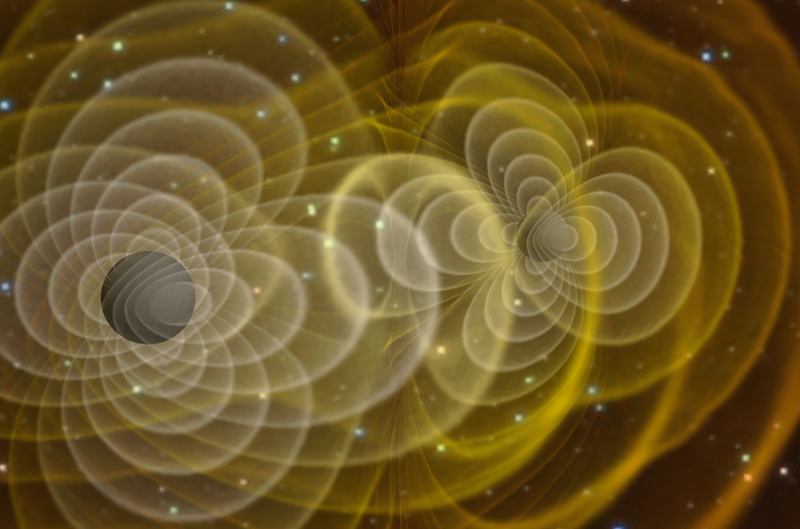Gravitational waves: Why the fuss?

Great excitement rippled through the physics world Monday at news of the first-ever detection of two ultra-dense neutron stars converging in a violent smashup.
The discovery, scientists say, would not have been possible without the detection of gravitational waves—a two-year-old feat awarded the 2017 Nobel Physics Prize.
A backgrounder:
Q: What are gravitational waves?
Albert Einstein predicted gravitational waves in his general theory of relativity a century ago. Under the theory, space and time are interwoven into seemless continuum—adding a fourth dimension to our concept of the Universe, in addition to our 3D perception of it.
Einstein postulated that mass warps space-time through its gravitational force.
A common analogy is to view space-time as a trampoline, and mass as a bowling ball placed on it. Objects on the trampoline's surface will "fall" towards the centre—representing gravity.
When objects with mass accelerate—when two neutron stars or black holes spiral towards each other, for example—they send waves along the curved space-time around them at the speed of light, like ripples on a pond.
The more massive the object, the larger the wave and the easier it is to detect.
Gravitational waves do not interact with matter, travelling through the Universe almost unimpeded.
Q: Why are they so elusive?
Einstein himself doubted gravitational waves would ever be detected given how small they are.
Ripples emitted by a pair of merging black holes, for example, would stretch a one-million-kilometre (621,000-mile) ruler on Earth by less than the size of an atom.
Q: How are they detected?
One technique involves detecting small changes in the distance between objects.
Gravitational waves passing through an object distort its shape, stretching and squeezing it in the direction the wave is travelling, leaving a telltale, though miniscule, effect.
Detectors such as LIGO in the United States and Virgo in Italy, are designed to pick up such distortions in laser light beams.
At LIGO, scientists split the light into two perpendicular beams that travel over several kilometres to be reflected by mirrors back to the point where they started.
Any difference in length upon their return would point to the influence of gravitational waves.
Sources: European Space Agency, Institute of Physics, LIGO, Nature.
© 2017 AFP





















